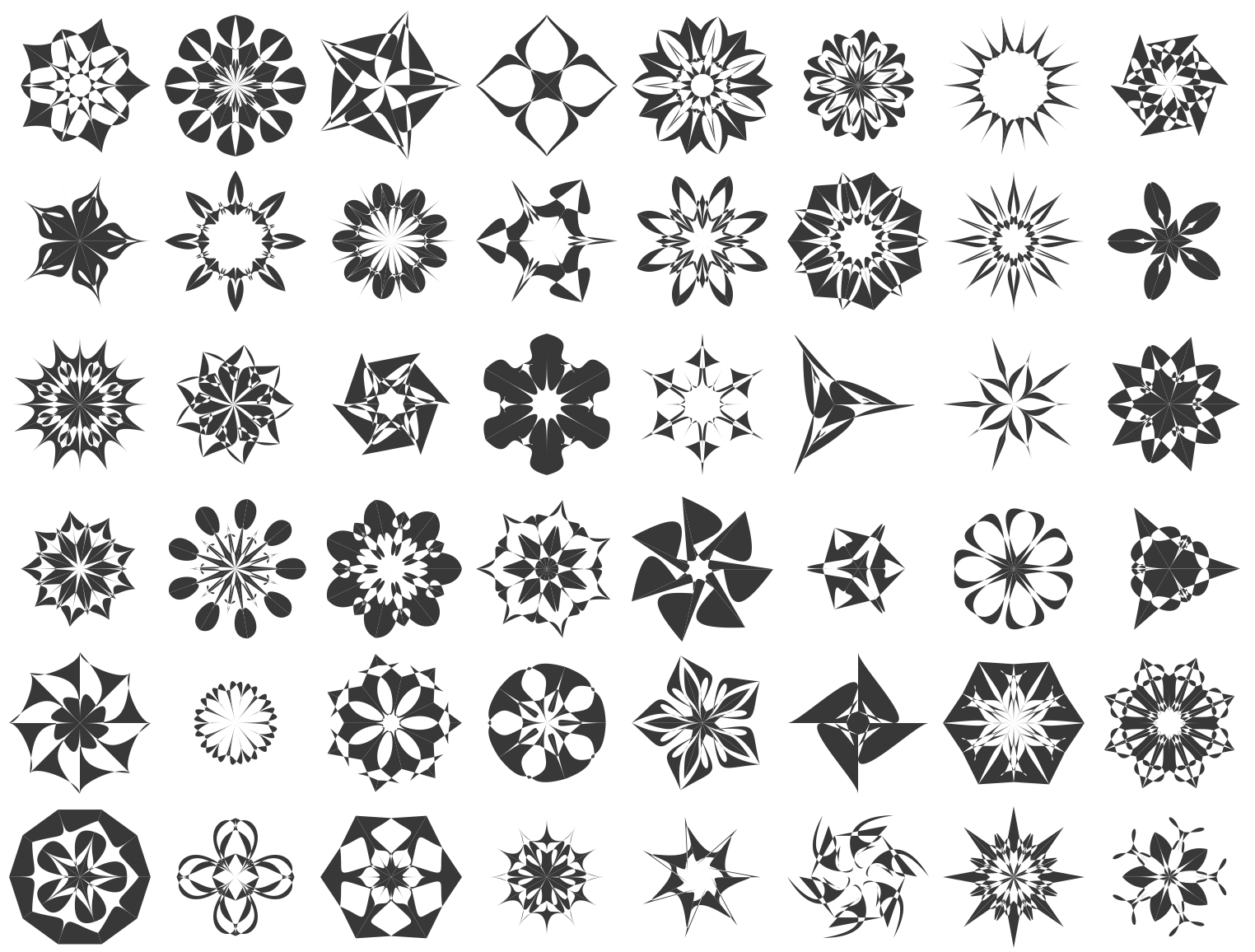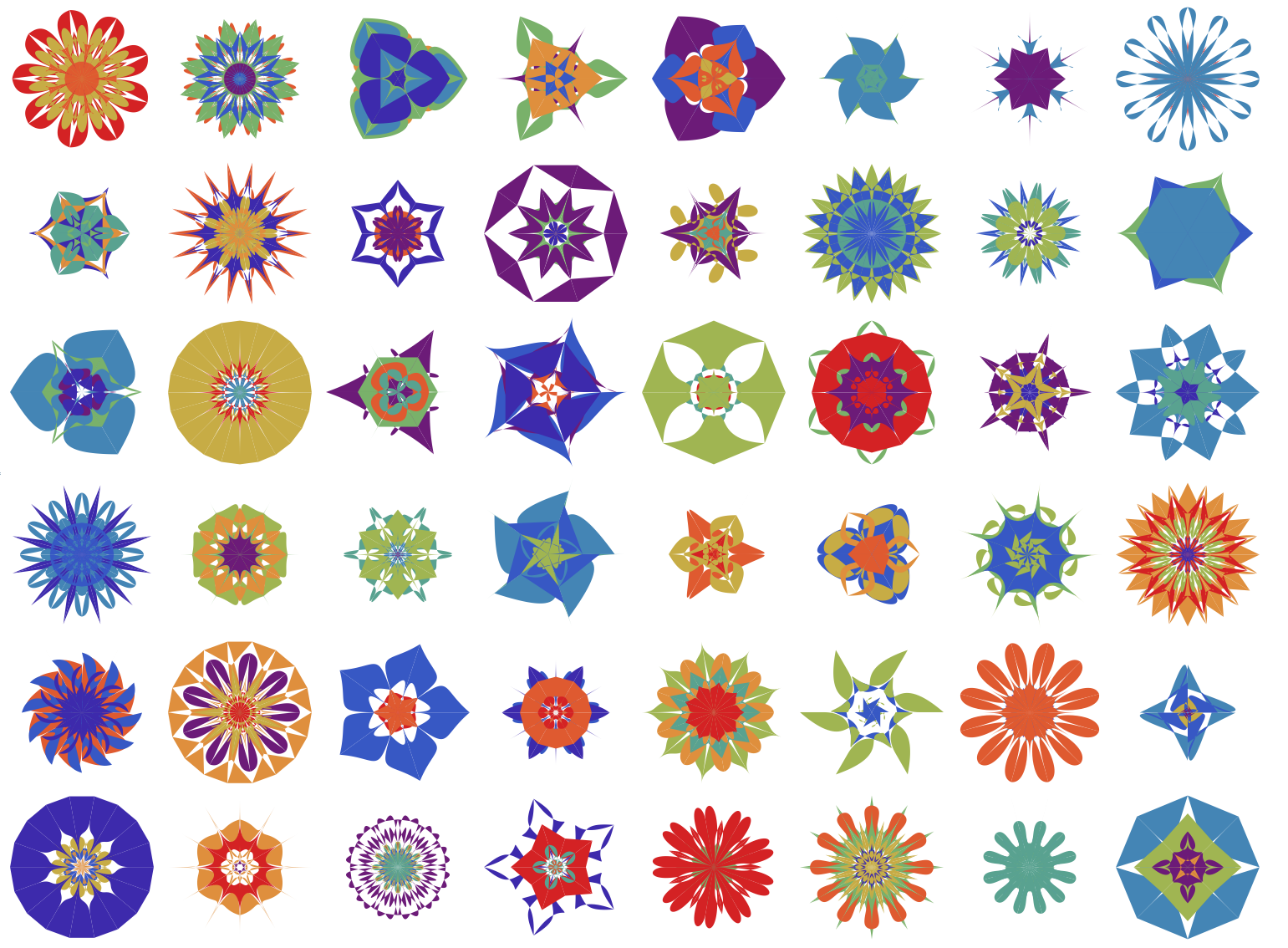A few weeks ago the Wolfram Function Repository entry RandomMandala was approved. With that entry I won a 2019 Wolfram Technology Conference competition announced here.
Below are given a few examples of multiple RandomMandala executions.
Black-and-white mandalas
SeedRandom[443];
Multicolumn[
Table[ResourceFunction["RandomMandala"]["Radius" -> 5,
"RotationalSymmetryOrder" -> RandomChoice[Range[3, 9]],
"ConnectingFunction" -> FilledCurve@*BezierCurve,
"SymmetricSeed" -> RandomChoice[{8, 2} -> {True, False}]], 48], 8]

Colorized mandalas
Colorized mandalas are derived in two ways: (1) by coloring the different parts of the seed segment, and (2) by super-imposing mandalas with different radii on top of each other.
Here is an example of the first approach:
SeedRandom[94823];
Multicolumn[
Table[ResourceFunction["RandomMandala"]["Radius" -> 1,
"RotationalSymmetryOrder" -> RandomChoice[Range[3, 12]],
"ConnectingFunction" -> FilledCurve@*BezierCurve,
ColorFunction -> "Rainbow",
"SymmetricSeed" -> RandomChoice[{8, 2} -> {True, False}],
ImageSize -> Small], 48], 8]

Here is an example of second approach:
SeedRandom[23223];
Multicolumn[
Table[ResourceFunction["RandomMandala"][
"Radius" ->
RandomChoice[{Identity, Log, ArcCot,
ArcSec, #^0.618 &, #^1.618 &}][Range[8, 2, -2.]],
"RotationalSymmetryOrder" -> RandomChoice[{3, 4, 5, 6, 9, 12}],
"ConnectingFunction" -> FilledCurve@*BezierCurve,
ColorFunction -> "Rainbow",
"SymmetricSeed" -> RandomChoice[{8, 2} -> {True, False}],
ImageSize -> Small], 48], 8]

Some history
For me the mandala generation started with this Mathematica Stackexchange discussion.
I continued using the random mandala generation code for the (scaffolding) testing of different Machine Learning algorithms. ( Here is an example .)